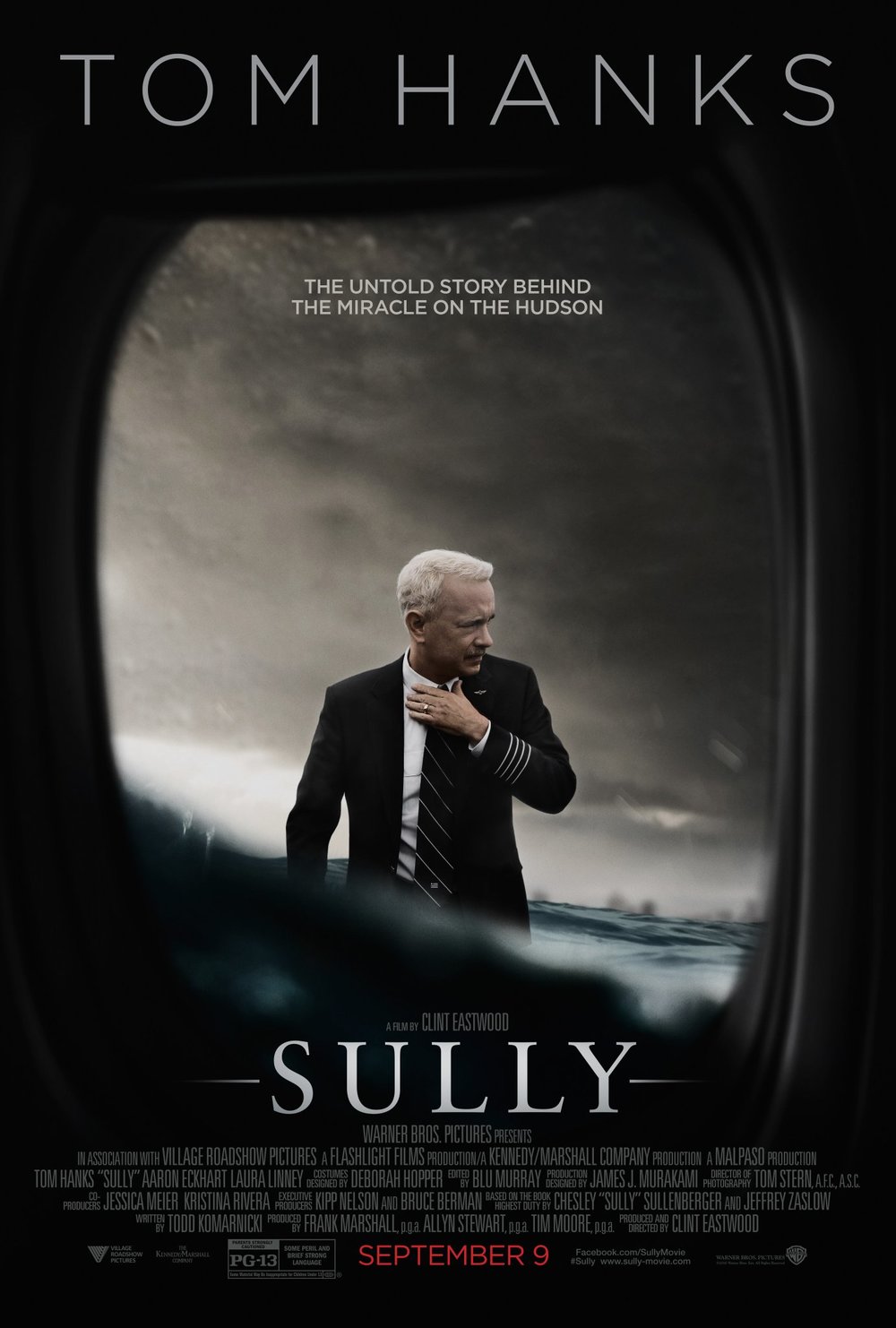On January 15, 2009, Captain Chesley Sullenberger successfully piloted a US Airways Airbus A320 to a water landing on the Hudson River after the plane lost both its engines in a bird strike. 155 people were on board, and the only casualties were a couple of cases of hypothermia, a few broken bones, and a bad cut on a flight attendant’s leg. The whole event took less than six minutes from start to finish.
The real-life drama now gets the big-screen treatment in Sully, the latest from director Clint Eastwood, starring Tom Hanks as the titular pilot. While no doubt a compelling story, the film version is (if you’ll pardon the mixed metaphor) just this side of a train wreck. Suffering from a haphazard script, pedestrian direction, and a woeful lack of background and character development, Sully actually comes off as a made-for-TV movie. In fact, if it weren’t for the presence of Hanks, Aaron Eckhart (as co-pilot Jeff Skiles), and Laura Linney (in a glorified cameo as Sully’s wife), there’s little at all to distinguish the film from a low-rent, straight-to-DVD production.
Even worse, large chunks of the film are a completely unnecessary (and irresponsible) litany of untruths and exaggerations.
To be fair, the reenactment of the landing is well done-actually giving the film a bit of a pulse-but the rest is little more than a mish-mosh of contentious NTSB hearings (when in reality they weren’t) and Sully himself doubting his heroic decision (when in reality he didn’t). It’s understandable that screenwriter Todd Komarnicki (Perfect Stranger) would want to inject a little conflict into the story, but not every tale has a bad guy. Making the NTSB seem like a bunch of schmucks trying to bury Sullenberger for his recklessness is no doubt what led Robert Benzon, the actual man who led the actual NTSB investigation, to fire back at the film. “We’re not the KGB. We’re not the Gestapo,” he told the Associated Press. “We’re the guys with the white hats on.” Benzon went on to say that the NTSB was never contacted or consulted for the film.
Clearly.
And while Sullenberger did in fact suffer from nightmares and insomnia after the Miracle on the Hudson (in some of the film’s more haunting and harrowing scenes), he has never wavered in his conviction that he did the right thing that January day.
As for the less egregious problems with Sully, Komarnicki authored a script that is disjointed at best and downright confusing at the worst. The water landing is depicted so many different times in so many different ways that it’s difficult to discern if the one you’re seeing at any given moment is the real thing, a figment of Sullenberger’s imagination, or one of the NTSB’s computer re-enactments.
On the human side, precious little time is given to the man himself, but the audience is teased by two out-of-nowhere flashbacks-one when a teen-aged Sullenberger flies for the first time and another when he has a much-less-scary emergency landing during his military days. Had either scene been allowed to play out for a while (or, better yet, been part of a more comprehensive deep-dive into his upbringing and training), we may have gotten a better picture of the man. As it stands, he’s still just as much of a mystery as he’s always been. Hero? Sure. But that’s still all we know.
The film also tries in vain to introduce us to a couple of the passengers: a father and two sons on a golf outing, a wheelchair-bound woman, and a mother with an infant. But they’re collectively given such short shrift by Komarnicki that he shouldn’t have even tried.
But hey-Tom Hanks does a great job.
Rating
2/5 stars
